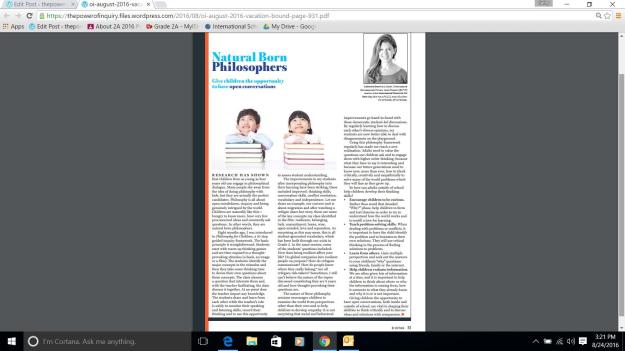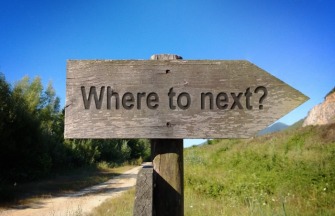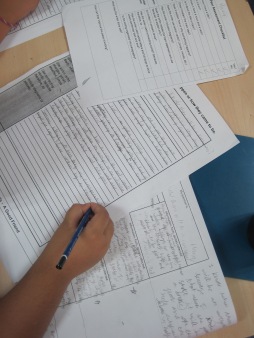
[photo credit http://www.startupdaily.net/2014/03/adelaide-tech-community-teaching-kids-code/]
Alfredo Papesit said in his L2 talk ‘code the change’ that “There is a disconnect between the technology that you have available to you, the problems we are facing in society and whether you know how to use this technology to its full potential.” What is his solution? Teaching students how to code. This is not a new idea, but it is still not something which is embedded within my school or indeed in many schools around the globe.
Papesit states that by knowing how to code “You will have another lens to approach problems and the power to find solutions to these problems. You will have the power to code up solutions which never existed before.” Papesit gave an example of his students investigating where energy was being wasted in their daily lives and using a hummingbird kit to design a prototype to design a solution to reduce energy waste.
However, for me a far more clear example of students using coding to create a solution were two high school students, who ran their own workshop at Learning2 for teachers and introduced me to ‘appinventor’ by MIT and ‘girls who code’. These two high school girls had been set the challenge to design an app by their teacher using ‘appinventor’ by MIT. They could design any app they wanted, provided there was a gap in the market for it. They chose to create technology to improve their community and the biggest problem they identified in HCMC was trash disposal. They wanted to solve not just the issue of recyclables (such as cans and plastic), but to also help community members to reuse items and furniture from expat families as they move to their next posting. The two girls created the app and explained the empowerment they felt as they were designing a solution to a very real problem.
The two girls also introduced me to ‘girls who code’ a foundation aimed to close the shockingly real gender gap in technology. Tech jobs are the fastest growing industry in the world, yet only 18% of computer science graduates in the US are women and by 2020, women are on track to fill only 3% of computing related jobs in the US. (Statistics taken from https://girlswhocode.com/about-us/)

[photo credit http://www.tiffaniestanard.com/news-events/new-partnership-with-girls-who-code/ %5D
‘Girls who code’ sets up immersion programs and after school clubs around the US to get girls coding. On their website are endless examples of what girls are doing to create change. Here is one example of a 17 year old girl, Margot Richards, who created a game to raise awareness on gun control laws called ‘Gun Cleaners’.
“With code, I was able to create a video game to raise awareness on gun control laws. The video game is called Gun Cleaners, and players use the up and down arrows to collect the assembly’s votes to help pass the gun control bill while avoiding being shot by guns. With a fun and addicting video game, we were able to help raise awareness about one our society’s most pressing problems.”

[photo credit https://www.linkedin.com/company/girls-who-code]
There are many skills which our students need to create change in our world and to take action. They need research skills, communication skills, thinking skills, visual literacy (we still see terrible posters being displayed around schools!) to name just a few… These skills are all explicitly a part of the PYP, MYP and IB curriculum, but it seems obvious to me that coding skills should also be a part of our curriculum, starting from KG in the PYP program.
I was truly inspired by these two highschool students who led their coding workshop at Learning2 and here are some questions which I have been asking myself since my experience at Learning2:
- How can we implement a coding culture at ISHCMC? Where do we start?
- What other skills do our students need to be agents of change in their community?
- What organizations are there in HCMC that our students can be involved in?
References
Alfredo Papesit’s L2 talk ‘code the change’ https://youtu.be/WiZ0q5NOaKQ
https://girlswhocode.com/about-us/
https://code.org/

























































